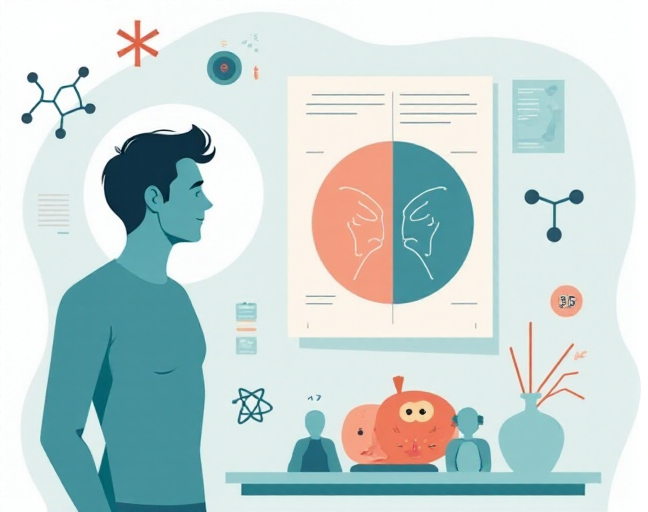Testosterone is a hormone produced in the male body, mainly by the testes. It’s essential for producing sperm, maintaining sex drive, and even building muscle and bone mass. As we age, testosterone production naturally declines, and when it drops too low, it can lead to a range of symptoms. A diagnosis of low testosterone (or “low T”) is confirmed when levels fall below 300 ng/dL (nanograms per deciliter).
How Do You Know If You Have Low Testosterone?
Physical Symptoms
- Erectile Dysfunction: Struggling to perform in the bedroom?
- Fatigue: Feeling drained or lacking energy all the time?
- Reduced Muscle Mass: Are your muscles shrinking even with regular exercise?
- Increased Body Fat: Gaining weight or having a harder time losing it?
- Back Pain: Chronic pain without a clear cause.
- Osteoporosis: Weakened bones that are more prone to fractures.
- Heart Health Risks: A higher chance of heart attack and elevated cholesterol levels.
- Low Sperm Count: Trouble with fertility can often be tied to low testosterone.
- Gynecomastia: Unwanted breast tissue growth in men.
- Increased Refractory Period: The time it takes to perform again after sex becomes longer.
Mental Symptoms
- Lower Libido: A dip in sex drive, even when you’re not stressed or distracted.
- Brain Fog: Finding it hard to focus or concentrate on tasks?
- Memory Problems: Forgetfulness or difficulty retaining information.
Emotional Symptoms
- Depression: Feelings of sadness, hopelessness, or despair without a clear cause.
- Lack of Motivation: Feeling uninspired or lacking ambition?
- Irritability: Getting angry or frustrated more easily than usual.
Testosterone also influences body hair production, so men with low testosterone might notice thinning or loss of facial or body hair, even if they don’t have a genetic predisposition to balding.
If any of these symptoms sound familiar, it’s time to see a doctor. Don’t try to self-diagnose or rely on random remedies you see online.
How Is Low Testosterone Diagnosed?
To check testosterone levels, a blood test is usually taken in the morning when levels are at their highest. If the first test shows low testosterone, a follow-up test a few days later helps confirm the result. Testosterone levels typically range from 300 to 1000 ng/dL, but some labs might consider anything above 200 ng/dL as normal. Your doctor will interpret the results and may recommend further testing to rule out other conditions, like osteoporosis or prostate issues.
Treating Low Testosterone Symptoms
Most men with low testosterone need both low hormone levels and symptoms to begin therapy. It’s possible to have low T without experiencing symptoms, and if your symptoms are mild, you may not need treatment. However, if a medical issue like medication or weight gain is identified as the cause of low testosterone, it’s usually best to address that first.
If therapy is necessary, there are several options to consider:
- Skin Patch: Worn at night, the patch slowly releases testosterone into the skin over 24 hours.
- Gels: These are applied daily to the skin on areas like the upper arms or thighs. Be sure to wash your hands afterward and cover the application area to avoid contact with others.
- Mouth Tablets: Placed on the inner cheek or gums, these tablets release testosterone throughout the day.
- Pellets: Implanted under the skin, these pellets slowly release testosterone over a few months.
- Injections: Given every 7-14 days, testosterone levels may spike immediately after the injection, leading to a roller-coaster effect on energy and mood.
Many men see improvements in symptoms like energy levels and mood within 4-6 weeks of starting testosterone therapy.
What Are the Risks of Testosterone Treatment?
While testosterone therapy can help, there are some potential side effects to keep in mind:
- Prostate Enlargement: Testosterone can stimulate prostate growth.
- Increased Red Blood Cells: This could increase the risk of blood clots.
- Acne: Common in some men undergoing therapy.
- Infertility: Long-term testosterone use can affect sperm production.
- Swelling of Ankles or Feet: Fluid retention may occur.
- Testicle Shrinkage: A side effect of long-term testosterone therapy.
- Breast Pain or Enlargement: Swelling in the chest area.
Natural Ways to Boost Your Testosterone
- Prioritize Sleep: Sleep is crucial for hormone regulation. Aim for 7-8 hours a night. If sleep issues are common, talk to your doctor about possible solutions.
- Manage Your Weight: Carrying excess weight can lower testosterone levels. Losing weight might naturally help boost production, while men who are underweight should focus on achieving a healthy weight.
- Stay Active: Regular physical activity can help raise testosterone. Aim for at least 20 minutes of brisk walking daily and strength training exercises a few times a week. But don’t overdo it; too much exercise can have the opposite effect.
- Control Your Stress: Stress raises cortisol levels, which can inhibit testosterone production. Take time for yourself each day—whether it’s reading, playing music, or something else you enjoy.
- Review Your Medications: Some medications, such as opioids or steroids, can decrease testosterone. Don’t stop taking any prescribed medication without first consulting your doctor, as they may offer alternatives or adjustments.
Taking action with these lifestyle changes can help balance your testosterone levels naturally and improve your overall health!


